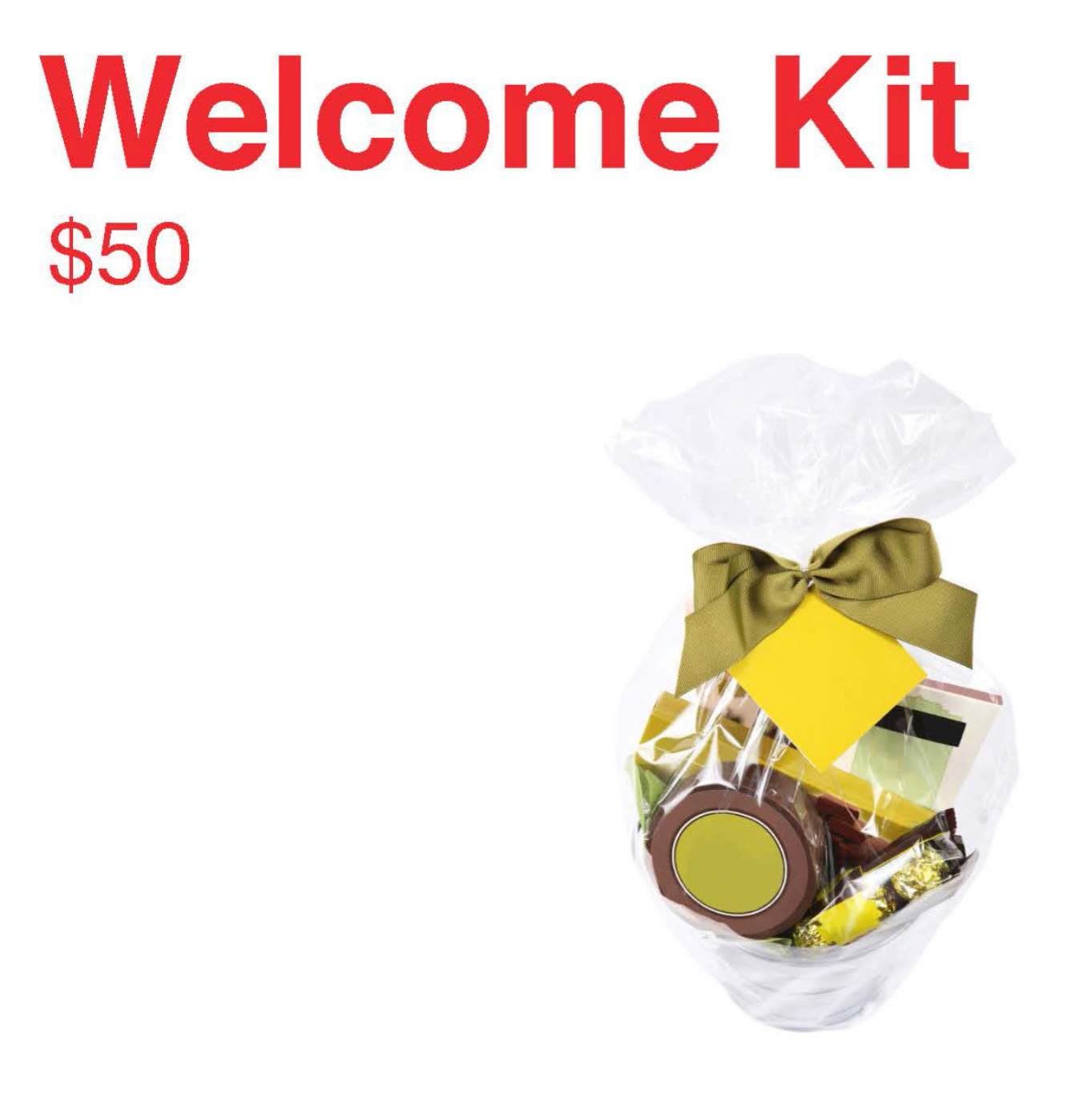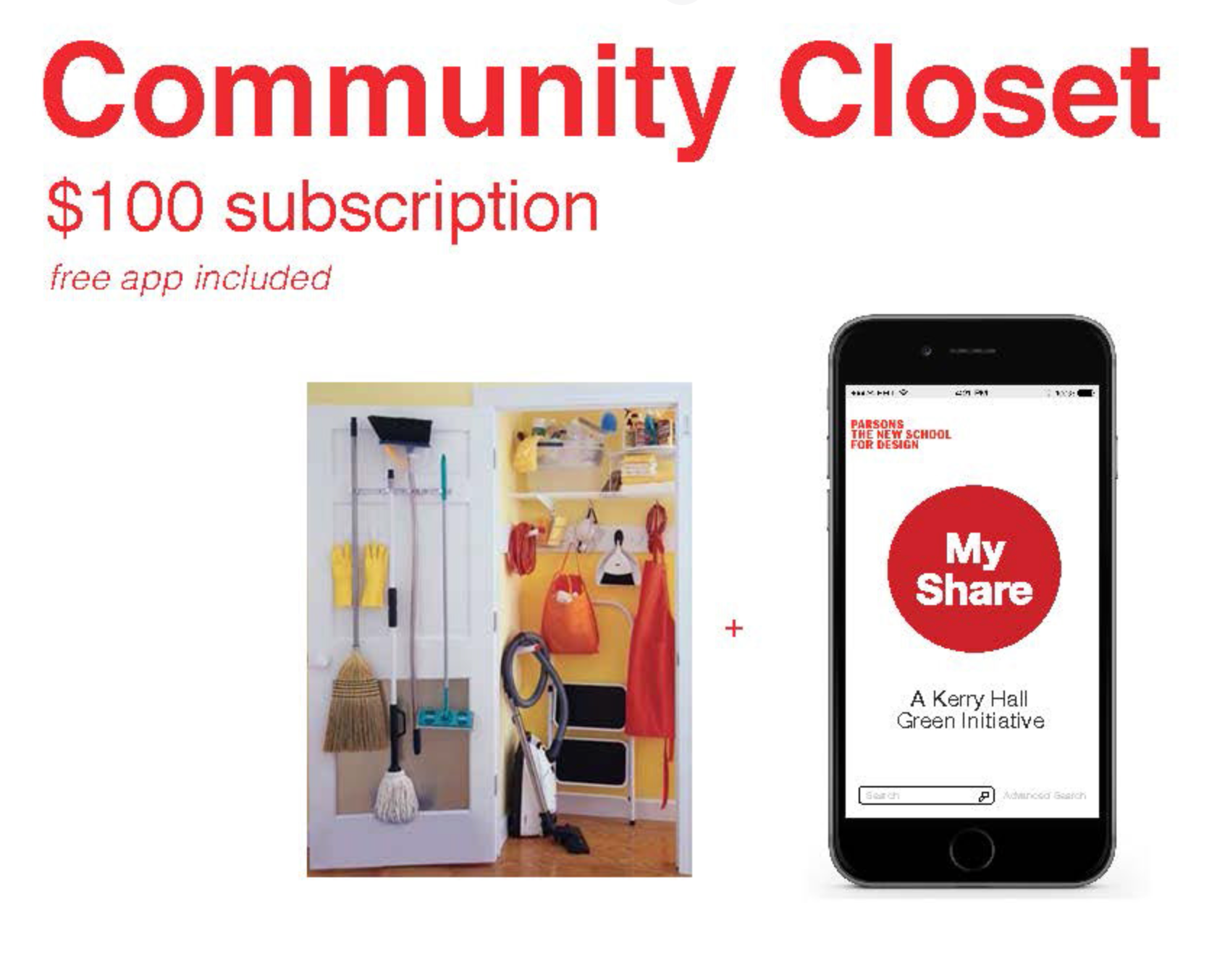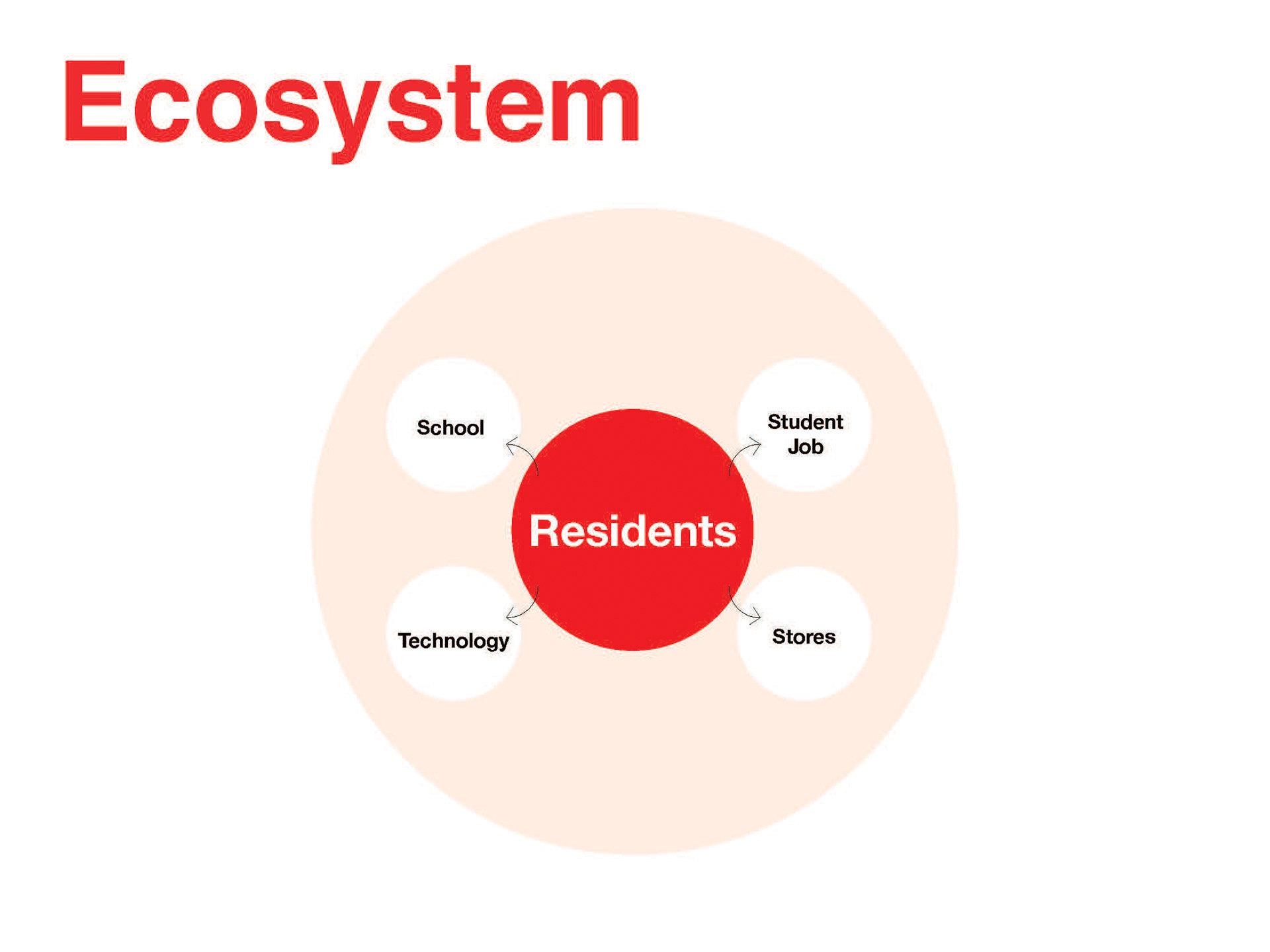The end product
Context
Context:
Kerrey Hall is The New School’s newest and greenest residence hall. It consists of 617 undergraduate and graduate students from all around the world.
Problem definition:
Levels of waste and consumption are high at the start of each semester, which contrasts the vision of the residence to be green and environmentally friendly. Students in Kerrey Hall spend an average of $150 - $350 when they first move into the residence.
Quantitative Research:
We started off by digging data on the number of residents and the length of their stay in the residence. We found that the majority of the students were international who came to the residence as part of a one-year exchange program.
Qualitative Research: Interviews
Then we set off and interviewed 30 of these residents whom we found at the lobby on a laundry day. The questions we posed were open and exploratory, focusing mainly on their transition and move into the city, the items they brought with them, and their new habits of purchasing products and spending.
Mapping The Residents' User Journey
After talking to residents we were able to map out their journey to living in Kerrey Hall. We found that their pain points were all centered around lacking necessities because of moving restrictions and costs. Since nearly half of the residents are international students they are very limited in what they can bring with them on a long flight. Most students brought a single suitcase and a backpack.
Personas:
We also identified three types of new residents who perceive spending and sharing differently. These were the main personas for the exploration phase of the project and helped us keep our focus on who we are designing for.
We asked residents what items they purchased when they moved into Kerrey Hall in order to get settled. The majority of students surveyed spent over $300 just to purchase the basic living necessities that they were not able to bring with them. We also found that average price varied depending on where residents shopped.
Understanding that most residents were international, staying for short periods of time, and understanding that some residents were open to sharing and others were apprehensive, enabled us to explore the space of sharing amongst strangers in a safe educational space.
Main Findings:
- Missing basic items that they need to have at their residence.
- Not knowing where to go for best deals resulted in them paying large amounts of money to purchase the basics.
- Sharing happens late in their residence life when they know each other.
- Not knowing where to go for best deals resulted in them paying large amounts of money to purchase the basics.
- Sharing happens late in their residence life when they know each other.
We held a workshop with fellow students aiming to gather insights on the different ways that people share experiences and items especially when they are in a new city.
From those sessions several ideas were generated around tools for sharing and communications.
Focus Group:
A true A-ha moment surfaced during our in depth focus group with 18 Kerrey Hall residents. We drafted a list of questions about our three initial ideas and asked for their input. Along the way we found that all the residents felt rushed and stressed when they first arrived to Kerrey Hall and would like a Welcome Kit to help them transition more easily.
Prototyping The Closet Service Design:
The closet prototype tested our assumption that people are willing to share and that people will use the honor system when borrowing items. Instructions were posted on the inside and outside of the closet.
Assumptions Mapping:
Keeping our assumptions in place, we made sure we listed the major ones and thought of ways to test these assumptions with various prototypes. We focused on testing the following assumptions.
- Residents at Kerrey Hall need a sharing space.
- There is storage space per floor available for our suggestion.
- Residents will return items on time.
- Resident’s won’t damage items.
- Residents will repair damaged items.
- Stores will donate items to Kerrey Hall.
- Closet storage is the best way to address this.
- The school is willing to collaborate.
- An app is a great way (the best way) to archive & check in and out items.
- There is storage space per floor available for our suggestion.
- Residents will return items on time.
- Resident’s won’t damage items.
- Residents will repair damaged items.
- Stores will donate items to Kerrey Hall.
- Closet storage is the best way to address this.
- The school is willing to collaborate.
- An app is a great way (the best way) to archive & check in and out items.


Prototyped and tested the mobile app:
Created a higher-fidelity mockup of the app
Calculated the finances and developed the business strategy


Designed the brand and high-fidelity prototype of the app